Crop Factor (Canon)
It's not just the focal length of your lens that affects how large a field of view you will get. Different lenses may display different image angles on different cameras. The same goes for brands and camera manufacturers.
Imagine you have the lens:
This lens has a fixed focal length of 50 mm which means that you can not zoom in or out. We will now do a test on how the choice of camera can affect the focal length and image.
In our test we will use three different digital system cameras.
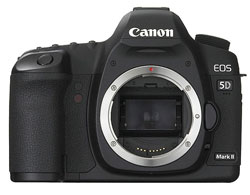 |
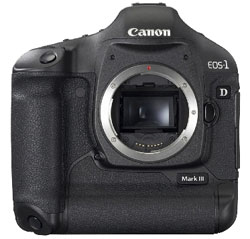 |
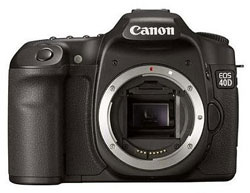 |
| Canon EOS 5D Mark II | Canon EOS 1D Mark III | Canon EOS 40D |
We set up some miscellaneous things on a kitchen table and put the camera on a tripod to take some photos.
If we use the lens on our Canon EOS 5D Mark II the combination of camera and lens will give us the picture below. Note that there is a lot of air around the various objects.
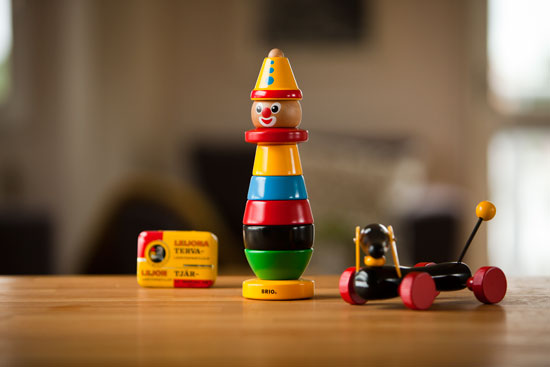
If we now, without moving the tripod, change camera to our Canon EOS 1D Mark III we get the picture below. Now one of the dachshund's rear wheels has been slightly cut and the air above the clown has shrunk.
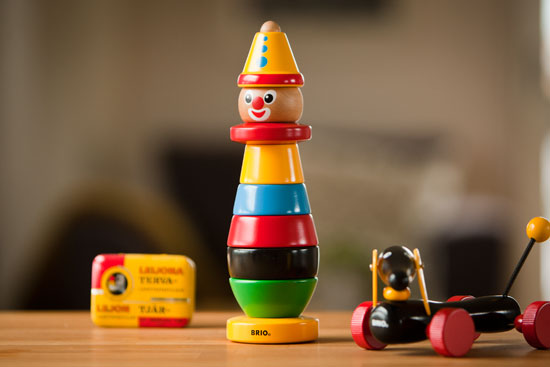
If we now, without moving the tripid, change camera to our Canon EOS 40D we get the picture below. The air around the various objects is now completely gone and both the dachshund and the clown have been cut.
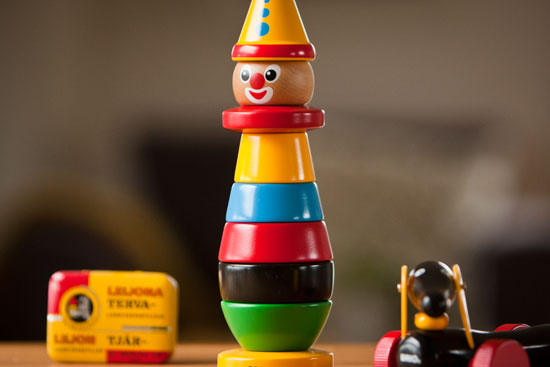
By changing the camera, we got the same effect as if we had zoomed in on a lens, and each changed a bit for every camera change.
Since the lens we used was a prime lens, without the possibility of zooming back or forth, the question becomes quite obvious - how can it be that we got three different results with three different cameras?
The size of the camera's sensor affects the camera's field of view through the lens
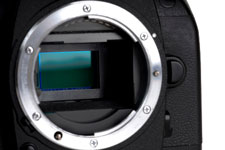 |
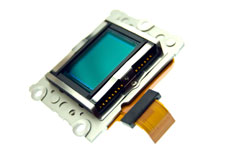 |
Each digital system camera has an image sensor that digitally detects the image and the flow of light traveling through the lens into the camera. In the older, non-digital, cameras there were a 35 mm film and the digital sensor today fulfills the same function as the film did back then.
The images above differs based on how large the digital camera's image sensor is. An older system camera's classic 35 mm film had the dimensions 36.0 x 24.0 mm, but if you compare with e.g. Canon EOS 40D that camera has an image sensor that measures 22.2 x 14.8 mm. The sensor in the digital system camera Canon EOS 40D has a size equivalent to 60% of its analog predecessor.
Most lenses on the market are adapted for use with both older film cameras and newer digital cameras. Although the lens has a round shape, it has a rectangular work surface inside. As you can see below, our three different cameras have different sized sensors, all marked in red below. These sensors should be the camera's eyes and that is what is looking through the lens.
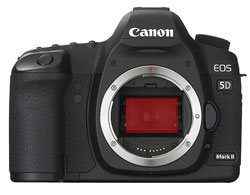 |
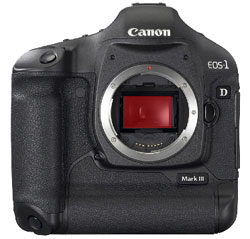 |
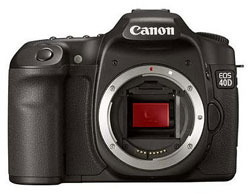 |
| Canon EOS 5D Mark II | Canon EOS 1D Mark III | Canon EOS 40D |
The lens has the same internal size all the time, of course, but when we move the lens from one camera to another, the camera and its sensor is looking through the lens a bit differently. The camera's image sensor is the eye and controls how much each camera sees through the lens.
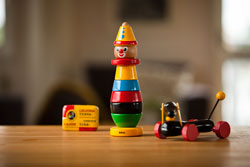 |
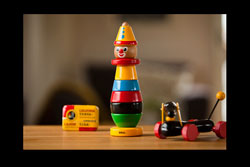 |
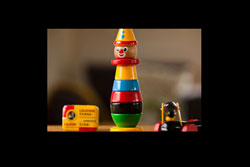 |
| Canon EOS 5D Mark II | Canon EOS 1D Mark III | Canon EOS 40D |
The different sensors in the cameras see different amounts of the image, therefore the end result also varies. A smaller sensor see less of the object. From what the camera sees, the camera creates its image and if the camera sensor does not see the clown's entire hat or tail on the dachshund, well then it is not included in the image either. The images are cropped already inside the camera, before they are taken, if the sensor is smaller.
Canon's different sensor types
There are three different sensor types in Canon cameras and the different sensors are different sizes.
| Sensor | Dimensions | Crop factor |
|---|---|---|
| FF, Full frame | 36 x 24 mm | |
| APS-H | 27.9 x 18.6 mm | 1.3x |
| APS-C | 22.2 x 14.8 mm | 1.6x |
Crop factor
With digital cameras, people talk about something called a crop factor. The crop factor indicates how much smaller the digital camera image is. In the case of Canon EOS 40D it is 1.6x, because the film size of the analog camera is 60% larger than the sensor in Canon EOS 40D and then you need to multiply by 1.6.
In the case of Canon EOS 1D Mark III the cropping factor is 1.3x, a bit less than 1.6 above, because here the the APS-H sensor is not that much smaller (about 30% smaller) than the Full frame.
Crop factor = Perceived focal length extension
Since we get the effect of zooming when the sensor becomes smaller, we talk about focal length extension. The image angle and focal length you get with the Canon EOS 5D Mark II and Canon EF 50mm f/1,8 II will be basically the same as you get with the Canon EOS 40D and Canon EF 28mm f/1,8 USM, because you then multiply 28 by 1.6x and gets 45 mm.
Below you can see the focal length extension that applies to these three camera models, which also represent Canon's different sensor types (Full frame, APS-H and APS-C).
 |
 |
 |
| Canon EOS 5D Mark II | Canon EOS 1D Mark III | Canon EOS 40D |
| FF , Full frame | APS-H sensor | APS-C sensor |
| No focal length extension | Focal length extension 1.3x | Focal length extension 1.6x |
 |
 |
 |
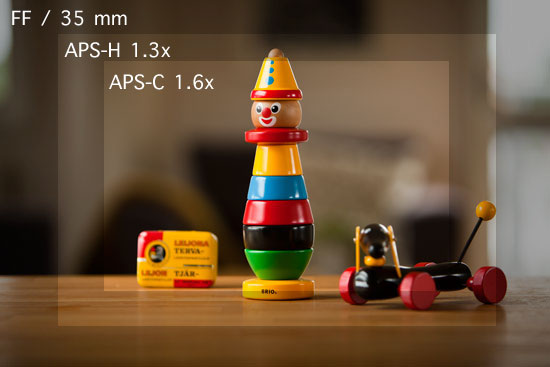
Why is all this important to me? How does it affect me in real life?
As we talked about earlier; by changing the camera we got the same effect as zooming. With different cameras we got a perceived change in focal length. Therefore, the focal length of an lens is not always what it appears to be. A lens and a focal length of 50 mm can suddenly become 65 mm or 80 mm, depending on the camera used.
If in the past you had a Canon analog camera and a wide-angle lens, this lens may not be able to provide you the same field of view and wide angle images if you use it on a newly purchased Canon digital camera with a APS-C sensor. The wide viewing angle may be perceived as narrower and this is not because the lens properties have changed, but because the cameras work in different ways and has different sensors. You must therefore be aware and prepared for the effect that the choice of camera might have on the focal length, before buying a new lens or camera.
Lensora will help you
On Lensora.com, we always calculate the perceived focal length for you, so that you can see how much the perceived focal length is on your particular camera when you look closer at a lens.